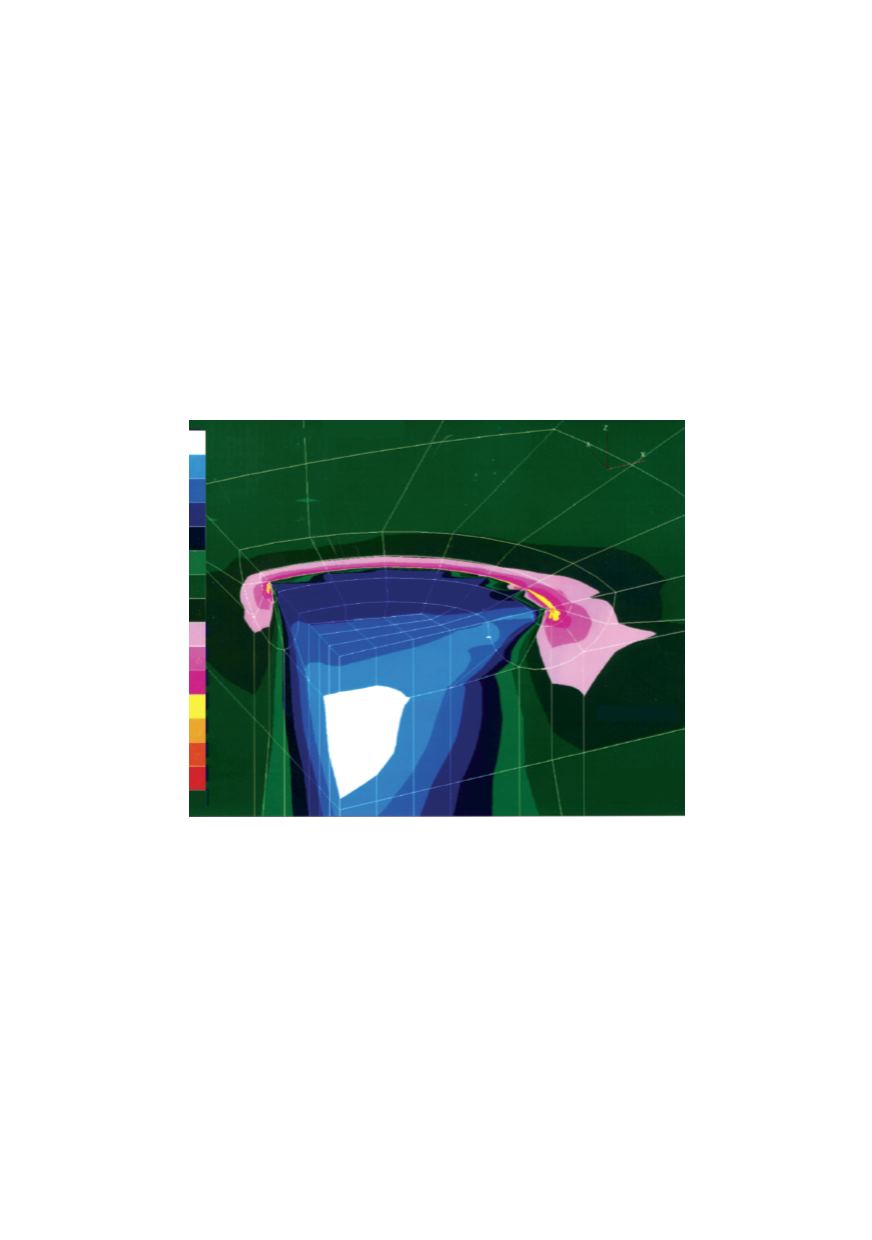

130
3. VOLUME (THREE-DIMENSIONAL) CRACKS
Next important deviation on theory side is associated with the crack geometry.
Analytical solutions of fracture mechanics concentrate on 2-dimesional problems and two
limit cases of plane stress and plane strain conditions. Although the real fracture
mechanics problems surround crack areas which are curved with stress field in three
dimensions, simply only possible analysis and corresponding solutions are limited to the
2-dimensional idealisation. Solutions based on this idealisation enable further treatment
by fracture mechanics. Here, it should be mentioned that this 2-dimesional approach is
not only limited to the analytical solutions, but is also completely transmitted to the
experimental evaluation of the material parameters. Moreover, the material properties, as
K
Ic
,
J
Ic
, and crack opening displacement (COD) are evaluated on through crack speci-
mens. Accordingly, one of the basic problems in fracture mechanics is, how on the basis
of knowledge, acquired with the help of 2-dimesional specimens with through cracks,
asses the behaviour of real 3-dimesional structures, e.g. with the surface crack (Fig. 5).
Figure 5: Stress distribution at surface crack tip
Practical experiences show that initiation and growth of fracture in the engineering
structures can be mainly attributed to the surface cracks. Therefore, the surface cracks in
structure are of great practical importance. Especially in thin wall structures with crack
the plastic collapse of the ligament is the most frequent cause for the failure. Except this,
as the through crack causes leakage, the damaged components can be timely excluded
from operation or unloaded, such cracks are in practical application less dangerous. For
that, residual strength of the surface crack ligament and the evaluation of crack critical
length for wall penetration are the most important criteria for the guarantee of “leak-
before-break (LBB)”. Therefore, study of the formula relating to the maximal loading of
the surface crack ligament is an important task of the fracture assessment, especially for
the case of pressurised structures.
It is important to note, that the surface cracks are of small dimensions, always smaller
than wall thickness and are more dangerous, especially when the bursting of vessel may


















